Camera/radar sensor limitations
Camera and radar
Obstructed camera
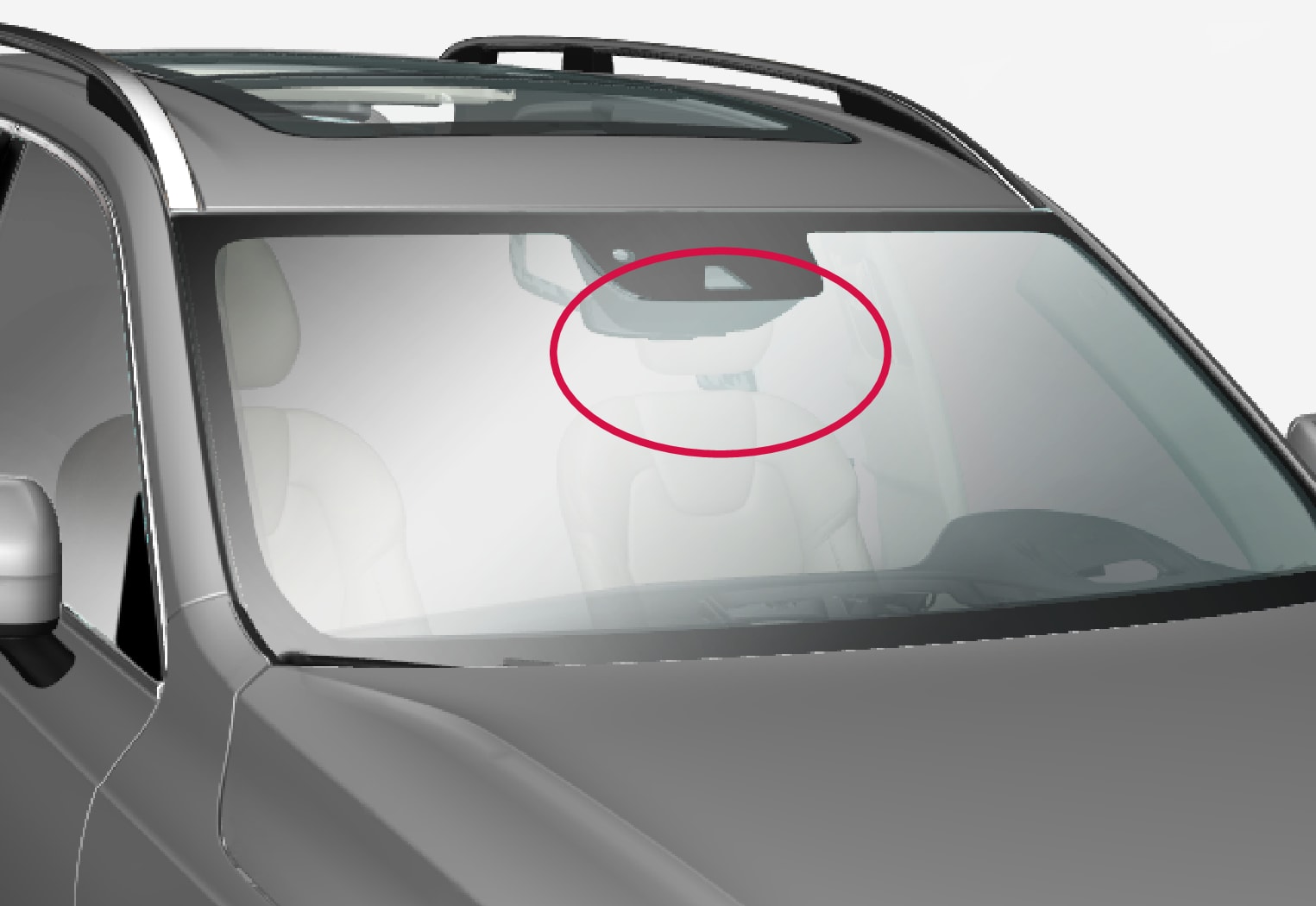
The camera is located on the upper interior section of the windshield along with the radar sensor.
Do not place, affix or mount anything on the inside or outside of the windshield, or in front of or around the camera and radar sensor – this could disrupt camera and radar-based functions. It could cause functions to be reduced, deactivated completely or to produce an incorrect function response.

If this symbol and the message “Windscreen sensor Sensor blocked, see Owner's manual” is displayed in the instrument panel, it means that the camera and radar sensor are unable to detect other vehicles, cyclists, pedestrians and large animals in front of the vehicle and that the vehicle's camera and radar-based functions may be obstructed.
The following table shows some of the situations that can cause the message to be displayed, and suggested actions:
| Cause | Action |
|---|---|
| The area of the windshield in front of the camera/radar sensor is dirty or covered by ice or snow. | Clean the windshield in front of the camera/radar sensor and remove dirt, ice and snow. |
| Thick fog, heavy rain or snow is blocking the radar signals or the camera's range of visibility. | No action. Heavy precipitation may sometimes prevent the camera/radar sensor from functioning. |
| Water or snow is spraying/swirling up and blocking the radar signals or the camera's range of visibility. | No action. Very wet or snow-covered roads may sometimes prevent the camera/radar sensor from functioning. |
| There is dirt between the inside of the windshield and the camera/radar sensor. | Consult a workshop to have the area of the windshield on the inside of the camera's casing cleaned. An authorized Volvo workshop is recommended. |
| Bright sunlight. | No action. The camera/radar sensor will reset automatically when lighting conditions improve. |
High temperatures
If the temperature in the passenger compartment is very high, the camera/radar sensor will switch off temporarily for approx. 15 minutes after the engine is started to protect its electronic components. When the temperature has cooled sufficiently, the camera/radar sensor will automatically restart.
Damaged windshield
Note
- If there are cracks, scratches or stone chips on the windshield in front of any of the camera and radar sensor "windows" and this covers an area of about 0.5 × 3.0 mm (0.02 × 0.12 in.) or more, contact a workshop to have the windshield replaced1.
- Volvo advises against repairing cracks, scratches or stone chips in the area in front of the camera and radar sensor – the entire windshield should instead be replaced.
- Before replacing the windshield, contact a workshop1 to verify that the right windshield has been ordered and installed.
- The same type of windshield wipers or wipers approved by Volvo should be used for replacement.
- If the windshield is replaced, the camera and radar sensor must be recalibrated by a workshop1 to help ensure proper functioning of all of the vehicle's camera and radar-based systems.
Radar
Vehicle speed
The radar sensor's ability to detect a vehicle ahead is significantly reduced if the speed of the vehicle ahead differs greatly from your vehicle's speed.
Limited field of vision
The radar sensor has a limited field of vision. In some situations, it may detect a vehicle later than expected or not at all.
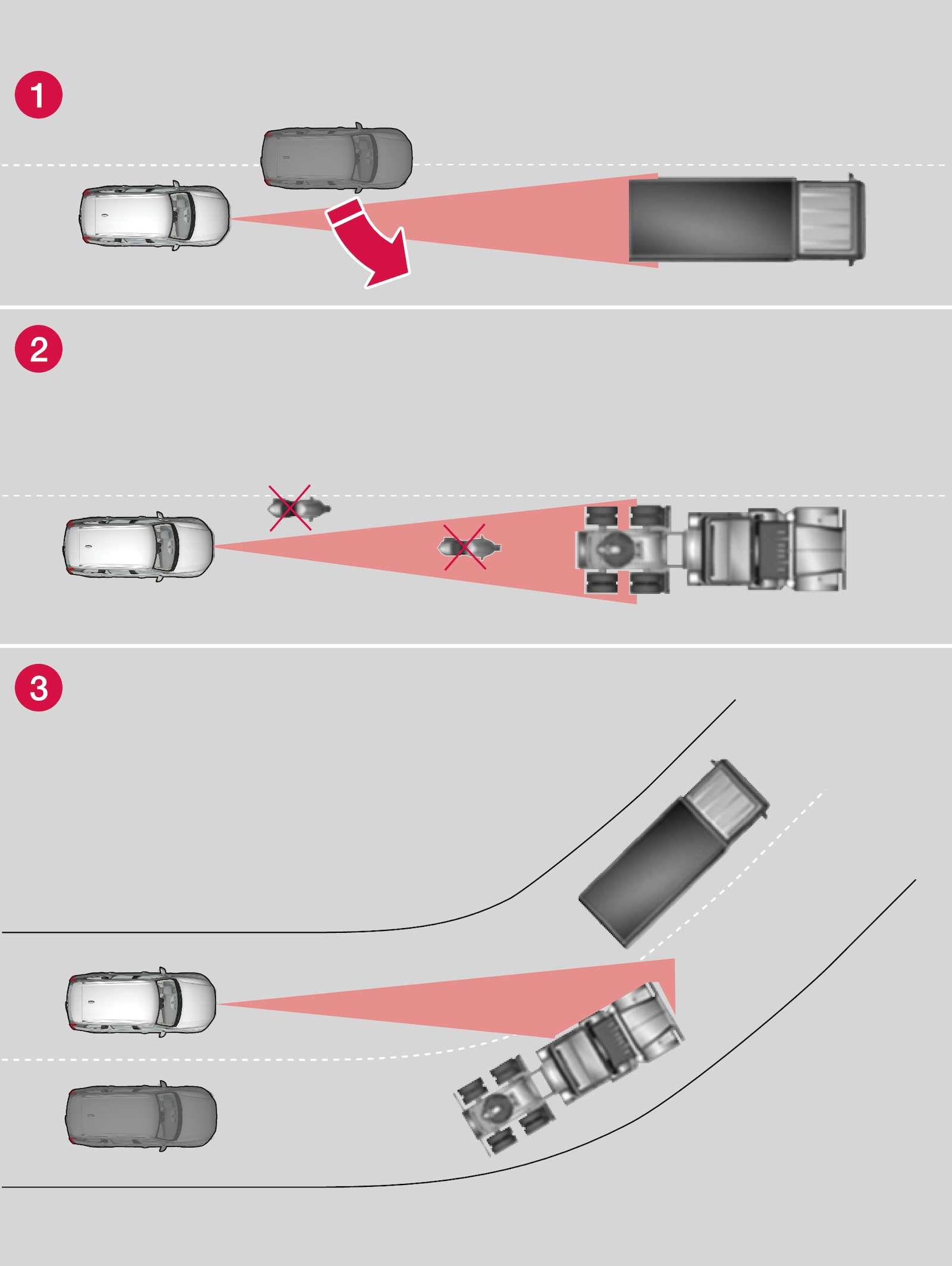
 The radar sensor's detection of vehicles very close to your vehicle may be delayed in certain situations, e.g. if a vehicle pulls in between your vehicle and the vehicle directly ahead.
The radar sensor's detection of vehicles very close to your vehicle may be delayed in certain situations, e.g. if a vehicle pulls in between your vehicle and the vehicle directly ahead. Small vehicles, such as motorcycles, or vehicles that are not driving in the center of the lane may remain undetected.
Small vehicles, such as motorcycles, or vehicles that are not driving in the center of the lane may remain undetected. In curves, the radar may detect the wrong vehicle or lose sight of a target vehicle.
In curves, the radar may detect the wrong vehicle or lose sight of a target vehicle.
Low trailers
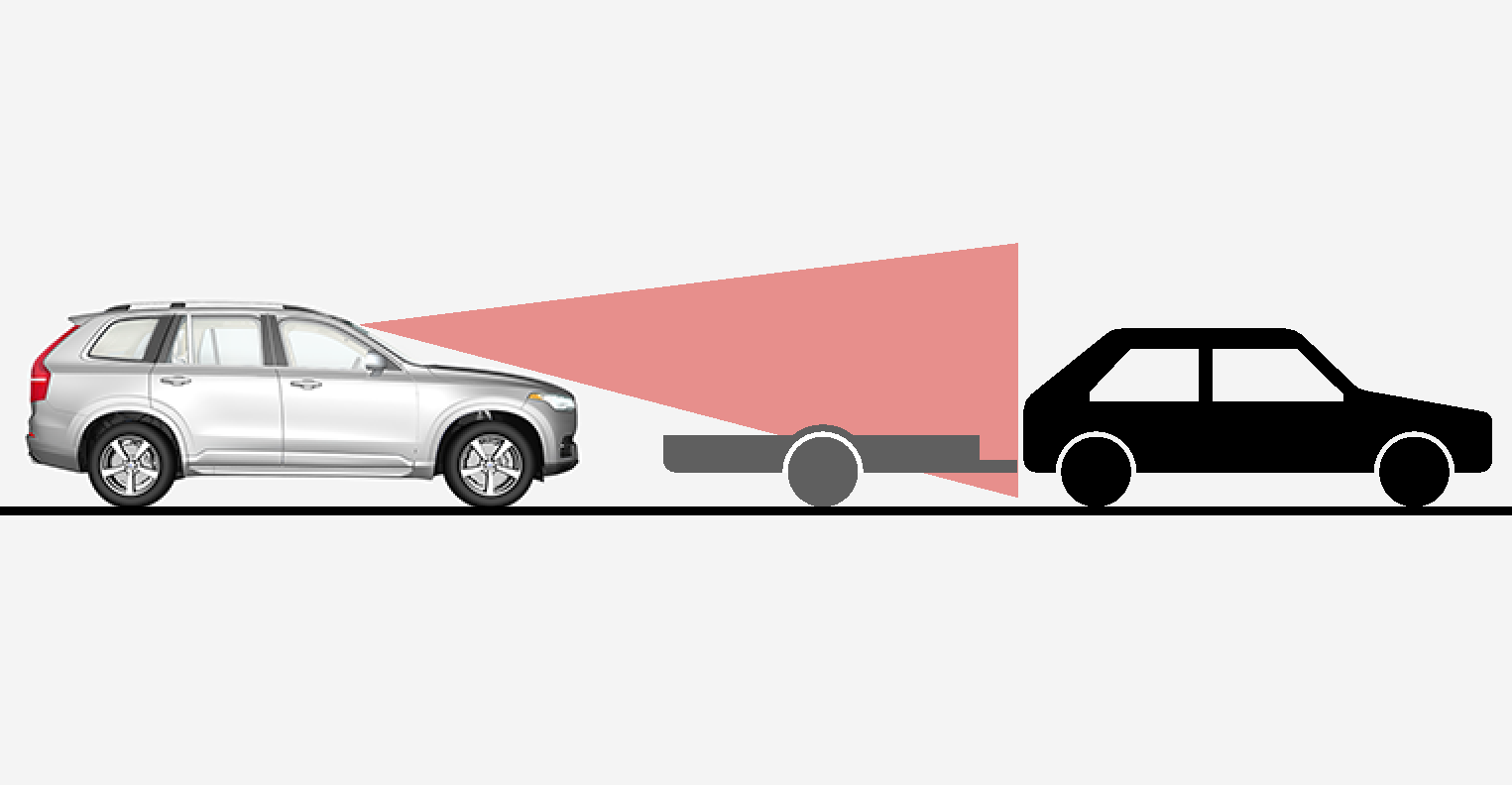
Low trailers may also be difficult or even impossible for the radar to detect. The driver should be extra alert when driving behind vehicles towing low trailers when Adaptive Cruise Control* or Pilot Assist* is activated.
Camera
Reduced visibility
Cameras have the same limitations as the human eye. In other words, their “vision" is impaired by adverse weather conditions such as heavy snowfall/rain, dense fog, swirling dust/snow, etc. These conditions may reduce the function of systems that depend on the camera or cause these systems to temporarily stop functioning.
Strong sunlight, reflections from the road surface, ice or snow covering the road, a dirty road surface, or unclear lane marker lines may drastically reduce the camera’s ability to detect the side of a lane, a pedestrian, a cyclist, a large animal or another vehicle.
Park Assist Camera*
Blind sectors
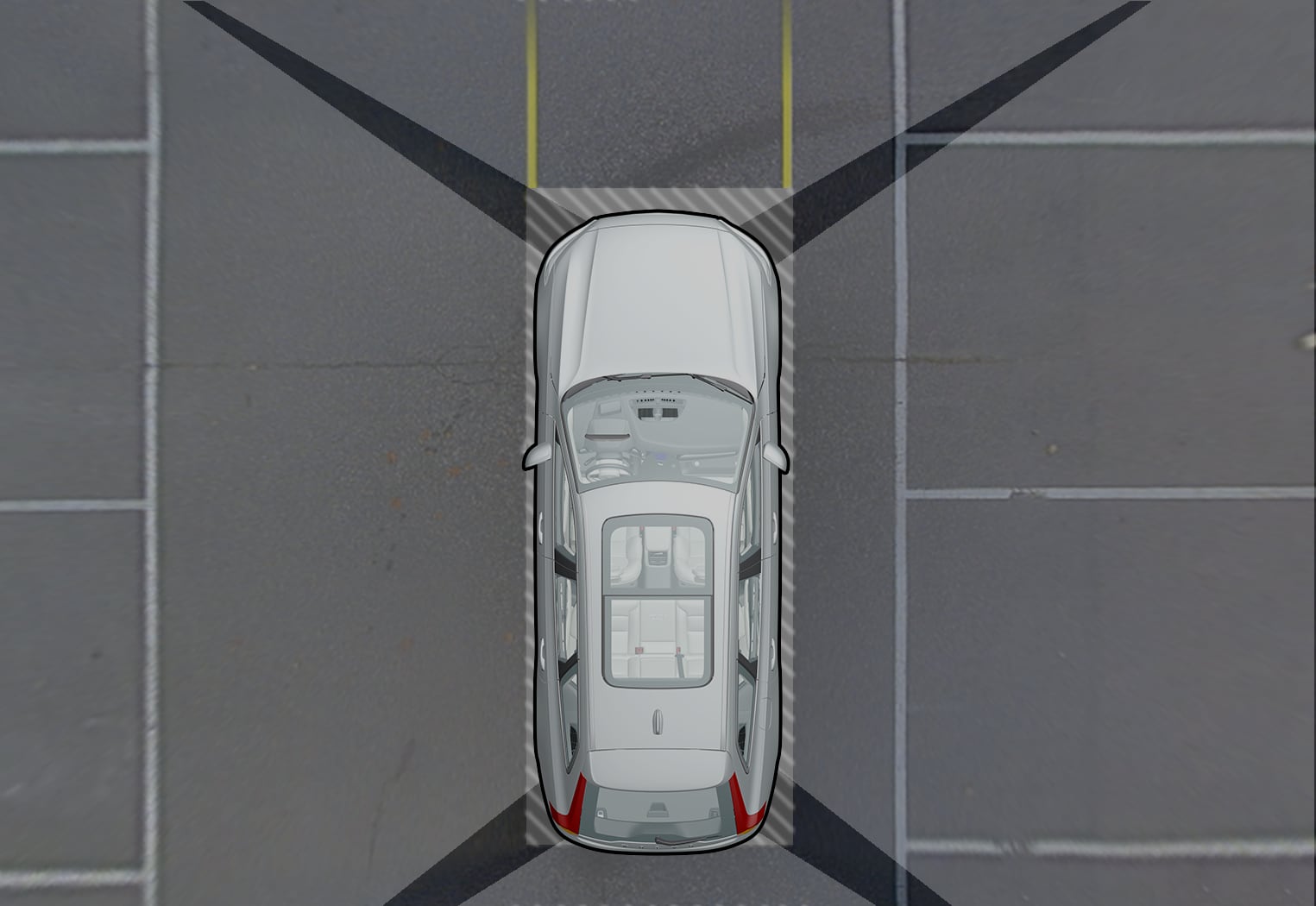
With Park Assist Camera's 360° view* selected, objects/obstacles may not be detected if they are located in the "joints" where the edges of the individual camera views meet.
Warning
Defective camera
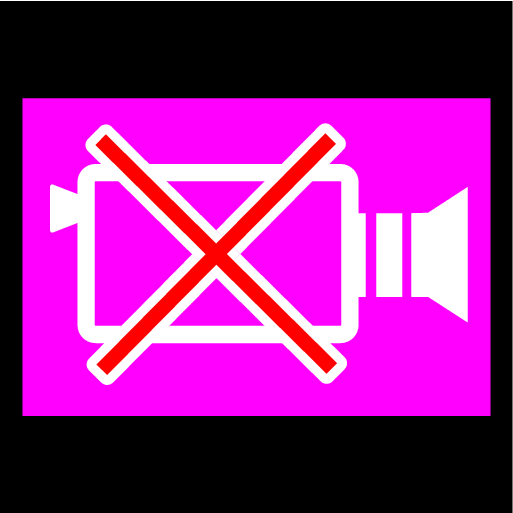
If a camera sector is dark and contains this symbol, this indicates that the camera is not functioning properly.
See the following illustration for an example.
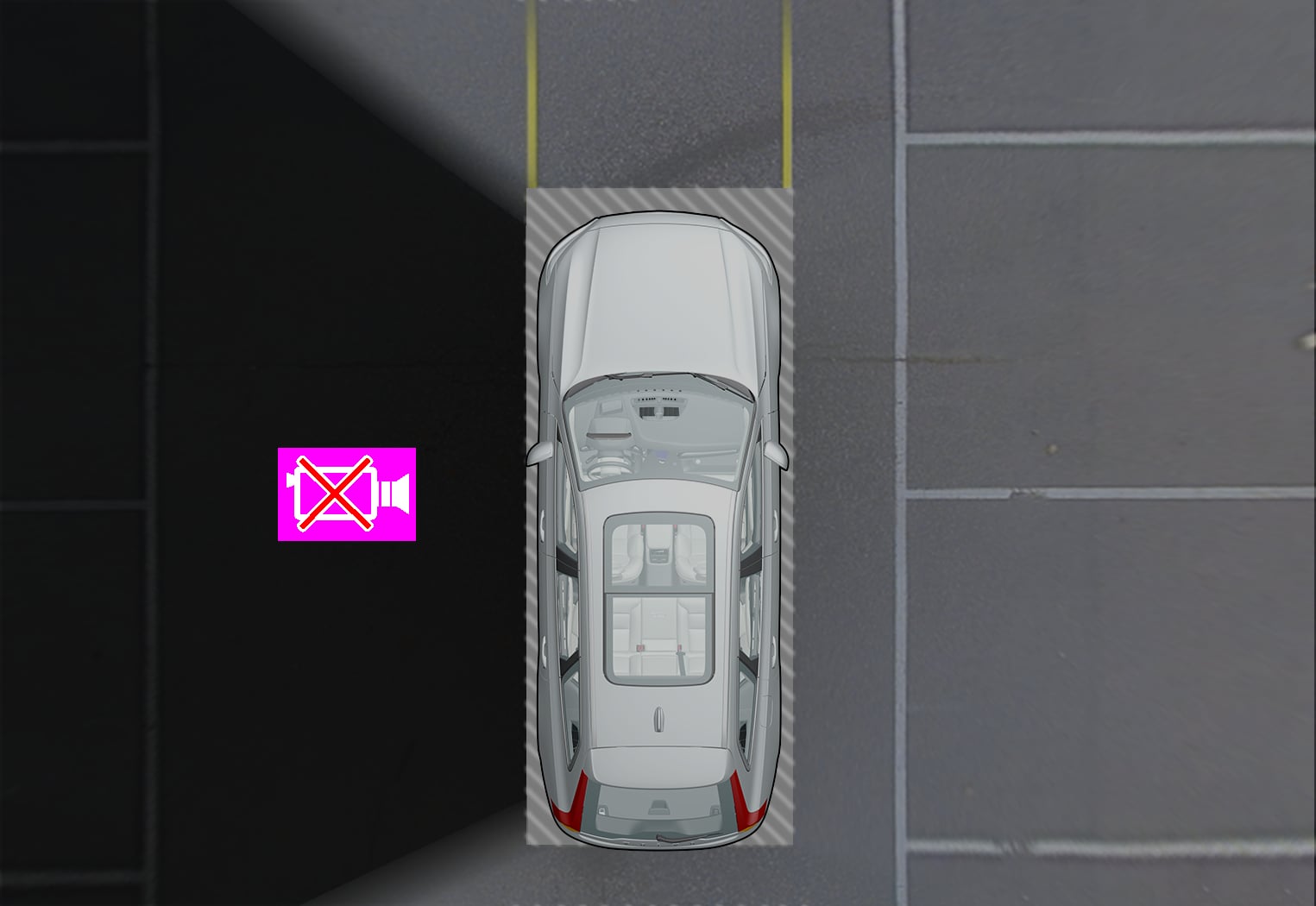
A dark camera sector may also be displayed in the following situations, but without the defective camera symbol:
- a door is open
- the tailgate is open
- a rearview mirror is folded in
Lighting conditions
The camera image is automatically adjusted according to the current lighting conditions. This means that the brightness and quality of the image may vary slightly. Poor lighting conditions may result in reduced image quality.
Rear Park Assist Camera
Warning
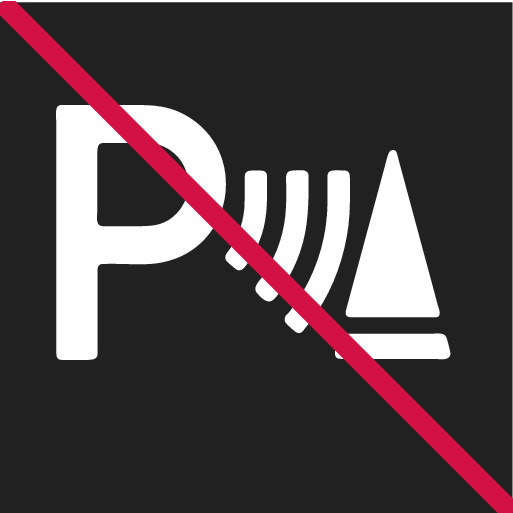
Be extra cautious when reversing if this symbol is shown when a trailer, bike carrier or similar is attached and electrically connected to the vehicle.
The symbol indicates that the rear parking assist sensors are deactivated and will not warn of any obstacles.